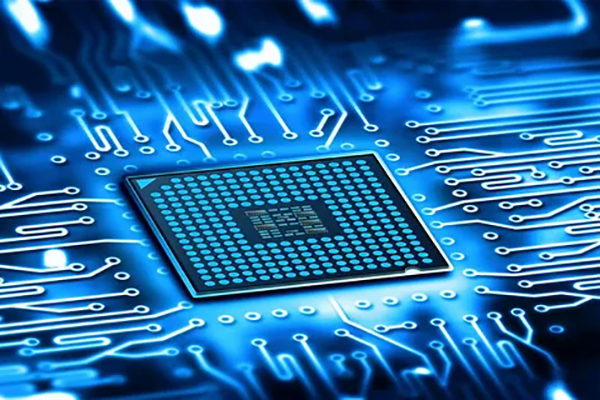Semiconductors have become omnipresent today. Over the last fifty years, the semiconductor industry has burgeoned into a worldwide force, currently boasting an annual revenue exceeding $550 billion. In the process, semiconductors have revolutionized various industries, including magnetic storage, photography film, incandescent lighting, and mechanical sensors, by introducing impactful new functionalities.
Consider the evolution of photo sharing and home lighting control over the past two decades. Even on the device level, semiconductors contribute to heightened functionality and performance while concomitantly reducing power consumption, size, and design intricacy. These factors collectively underpin the growth of the industry.
This brings us to the next question: which part of semiconductors ensures proper timing and coordination? The answer is semiconductor timing IC. Now, let’s understand everything about it.
What is Semiconductor Timing IC?
A semiconductor timing IC also referred to as a semiconductor timing integrated circuit, is a specialized integrated circuit meticulously crafted to furnish accurate timing signals in electronic devices. It is pivotal in synchronizing the activities of diverse components within a system, wherein it guarantees meticulous timing and coordination.
Widely employed across an array of sectors, including consumer electronics, telecommunications, automotive systems, and industrial automation, these timing ICs are indispensable for maintaining precision in tasks such as clock generation, frequency synthesis, clock distribution, and timing signal processing.
Forecasts indicate a substantial surge in the semiconductor timing IC market revenue in the forthcoming years. As per Kings Research, the global industry is projected to expand at a compound annual growth rate (CAGR) of 7.79% to garner a valuation of $12.62 billion by 2030. This growth is attributed to the escalating demand for consumer electronics, advancements in semiconductor materials and processes, and the integration of cloud computing and big data analytics in the semiconductor industry.
Key players in the semiconductor timing IC domain, such as Infineon Technologies, Silicon Labs, Microsemi, and Texas Instruments Incorporated, among others, offer a diverse spectrum of clock and timing solutions. These integrated circuits are designed meticulously to cater to the timing requisites of diverse applications, delivering dependable and precise timing signals.
What Does ‘Timing’ Mean For Electronics?
Timing stands as the lifeblood of electronic systems, providing a precise, steadfast, and regular signal analogous to a human heartbeat. It serves as a reference for all digital components within the system, akin to the human heart’s five crucial timing parameters: accuracy, absolute frequency, low noise, stability, and long-term performance.
Timing devices encompass passive resonators, active oscillators, and integrated clock generators and buffers, each executing distinct functions. Two indispensable components reside within a timing device: a resonator vibrating at a resonant frequency and an analog integrated circuit (IC) transforming these vibrations into electrical signals for distribution. This resonator-IC duo is amalgamated into a system-in-package (SIP), constituting a comprehensive solution.
Traditionally, quartz crystal-based resonators have predominated. These resonators, exhibiting piezoelectric effects, demand precise thickness and angular cuts during manufacturing to achieve the requisite resonant frequency and stability over temperature. While quartz has been a stalwart technology for seven decades, it grapples with limitations like fragility, susceptibility to mechanical stresses, sensitivity to rapid temperature changes, substantial size, and aging effects.
How Does Timing IC Work?
Timing ICs, exemplified by the popular 555 timer IC, leverage internal circuitry incorporating resistors, capacitors, transistors, and comparators on a single chip. Working collaboratively, these components generate and control precise timing signals.
A key function involves the generation of an oscillating signal, achieved through an internal RC network and a comparator. The RC network charges and discharges the capacitor, and the comparator, comparing voltage with a reference voltage, triggers a state switch upon reaching a specific threshold. This process produces a square wave oscillation with a defined frequency.
These ICs offer diverse timing control features, allowing adjustments to the oscillation frequency by modifying connected resistors and capacitors. External components can be connected via pins or inputs to further modify timing characteristics.
Prominent Applications of Semiconductor Timing IC
Timing ICs serve diverse purposes across industries and electronic devices. Let’s look at some of their major applications.
- Consumer Electronics: Widely integrated into consumer gadgets like smartphones, tablets, smartwatches, digital cameras, and gaming consoles, timing ICs deliver precise timing signals for tasks such as clock generation, data transfer synchronization, and timing control.
- Telecommunications: In the telecommunications sector, semiconductor timing integrated circuits are pivotal components in network equipment, routers, switches, and base stations. They guarantee exact timing for data transmission, signal synchronization, and adherence to network timing protocols.
- Automotive: Playing a pivotal role in automotive applications such as engine control units (ECUs), infotainment systems, advanced driver-assistance systems (ADAS), and vehicle-to-vehicle communication, these timing ICs furnish accurate timing signals for functions like engine timing, sensor synchronization, and communication protocols.
- Industrial Automation: Employed in industrial automation systems like programmable logic controllers (PLCs), robotics, and manufacturing equipment, timing ICs provide precise timing for synchronization of processes, control signals, and data acquisition.
- Networking and Data Centers: Crucial in networking equipment, data centers, and server systems, it ensures precise timing for data transmission, synchronization of network protocols, and clock distribution.
- Wireless Communication: In wireless communication systems, including 5G networks and optical networks, timing ICs contribute to precise timing for synchronization of signals, modulation, and demodulation processes.
These examples highlight just a fraction of the applications of semiconductor timing ICs. Potential growth in demand is attributed to technological advancements, increased utilization, and widespread incorporation across diverse industries.
What is Driving Semiconductor Timing IC Industry Growth?
The semiconductor timing IC market is experiencing significant progress propelled by breakthroughs in semiconductor materials and processes that yield top-tier IC performance. Beyond that, the widespread embrace of cloud computing and big data analytics across the semiconductor industry is acting as a potent catalyst, propelling the market for timing ICs to new heights. These dynamic trends paint a promising picture for the future trajectory of the semiconductor timing IC sector.
This growth is backed by a myriad of influential factors. Notably, the escalating demand for timing ICs in sectors like automotive, telecommunications, and consumer electronics, including smartphones and tablets, is also supporting the sector’s development. The prevalent adoption of the Internet of Things (IoT) and interconnected technologies adds another layer of impetus, bolstering the uptake of precision timing solutions.
Furthermore, notable advancements in semiconductor materials and processes are facilitating the creation of high-performance timing ICs tailored to meet the specific demands of these applications. The escalating adoption of cloud computing and big data analytics is not only transforming the semiconductor industry at large but also contributing substantially to the growth momentum. The sustainability of these trends in the forthcoming years points to a continued upward trajectory for this industry.
In a Nutshell
Semiconductor timing ICs are essential components in various electronic devices and systems, providing precise timing signals for functions like clock generation, frequency synthesis, and timing signal processing. With advancements in technology, they are expected to play a significant role in future electronic systems.















